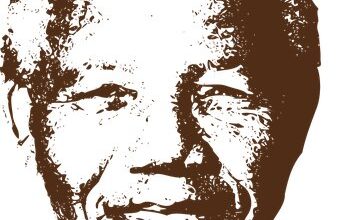“Rules of the Game” by Chinese-American novelist Amy Tan is the first chapter of the second part of her novel The Joy Luck Club. Structured like a game of mah-jong imbibing Tan’s native Chinese traditions, the novel is divided into four parts with each section consisting of four chapters each. The Joy Luck Club was published in 1989. Featuring in ‘Twenty-Six Malignant Gates’, the second part of her novel, this chapter describes the story of a young chess prodigy, Waverly Jong, and the difficult relationship she has with her mother.
Rules of the Game | Summary
Written in the first person narrative, the story begins with the young Waverley Jong describing how her mother taught her the art of ‘invisible strength’. As a six-year-old Waverly cries upon entering a candy shop because she wants candies, her mother scolds her, ignoring her demands. Back in the house, she tells her that the “strongest wind cannot be seen”, meaning that if she desires something, she would have to restrain herself from expressing her desires openly, till they get fulfilled, a sign of psychological strength that makes people inconspicuous, practically invisible to their opponents. The next week, Waverly pays heed to her mother’s instruction, biting back her tongue the entire time while in the shop and earning a bag of plum candies as a reward.
Waverly says that her mother used to instruct her children with such lessons to help them conquer the difficulties that they would face as Chinese migrants in San Francisco’s Chinatown, marginalized by their race, nationality, as well as the economic position that immigrant groups commonly occupy. However, Waverly never considered her family poor, blessed with a comfortable apartment and having a full stomach every day. She would play with the other children inside the dark alleys of the area, peering into shops with medicinal herbs and Chinese healers. Their street has a bustling fish market at the end, with a variety of live fish and seafood all meant exclusively for food. The corner of the street has a small café, Hong Sing’s, with a small door marked ‘Tradesmen’, from which Waverly and her brothers believe emerges bad people at night. A white photographer once asks Waverly and her friends to pose in front of the café, in such a way that the lens captures the roasted duck hanging in the window. Cheekily, Waverly suggests Hong Sing’s as a dinner place to the photographer who enquires about the menu, prompting a mischievous reply of “Guts and duck’s feet and octopus gizzards!”, knowing that it would leave the white man horrified and disgusted.
As the youngest and the only daughter of the family, Waverly is named after the street they live in – Waverly Place Jong but is affectionately called Meimei, or ‘younger sister’ at home. One morning, she asks her mother “What is Chinese torture?”, claiming that a boy in his class made a racist comment about Chinese people engaging in Chinese torture techniques. Furious, her mother replies that there are many professions and jobs that the Chinese do, torture being one of them.
The event that changes Waverly and her family’s life occurs soon after, in a Christmas congregation at the local church, where her elder brother, Vincent gets a second-hand chess set as a present. Waverly picks up an assorted candy set as a present while the Santa asks her how old she is. This confuses Waverly, who is aware that she is seven according to the English calendar, but eight according to the traditional Chinese calendar, reflecting the duality of her identity.
As they go back home, her mother insists on throwing away the used chess set, unwilling to accept anybody’s charity as a present. Her brothers ignore their mother, proceeding to play with it anyway. As they play, Waverly watches with growing fascination towards the hidden secrets of the chessboard, pleading with her brothers to let her play. Upon being bribed with candies, Vincent agrees to let her play, teaching her younger sister the rules of the game. He has no patience with the curious Waverly’s questions, refusing to entertain them, and their mother takes the opportunity to infuse another lesson on learning the rules and regulations in a foreign land alone, expecting no help from the citizens who already know. Her curiosity is unquenched by the lack of answers, Waverly gets a book to understand the rules of chess and learns numerous valuable lessons on chess strategies, tactics, and etiquette, and soon she defeats her brothers routinely in the game. One day, while returning from school, she spots a group of men watching a chess match while two men play. Waverly immediately goes over and approaches one of the observers to play. Initially dismissive of Waverly as a little girl who wants to play with dolls, he soon realizes that she is talking about chess. Much better at the game than her brothers, Waverly is defeated many times by Lau Po, but he teaches her valuable lessons about the game, giving Chinese names to chess strategies and openings, helping Waverly to become a better player.
As she keeps getting better and better at chess, people watch her as she defeats her opponents one by one, her mother watching proudly but masking her daughter’s genius as ‘just luck’ in a display of humility. A man advises Waverly to join local tournaments, who wants to go but is too afraid to ask permission from her mother. Knowing that her mother would never approve of her playing in front of strangers, Waverly intelligently uses reverse psychology, confiding that she is afraid to go to a tournament and lose, embarrassing her family. The trick works, her mother firmly tells her that it would be shameful if gives up on the fear of losing.
In her first tournament, she plays an older, white boy from Oakland who underestimates her due to her age and race, leading to an easy win for Waverly. As she keeps playing more tournaments and wins consistently, local shops display photos of her in their windows. Her mother, however, keeps annoying Waverly with unnecessary advice despite not understanding the game. As sponsors approach her, her mother waives off household duties for her, assigning them to her brothers instead. By the age of nine, she is the national champion, only 429 points away from earning the title of a grandmaster, hailed as a prodigy with her picture on the cover page of the famed Life Magazine.
Amidst all the fame and success, Waverly loses her childhood, not being able to play around with her friends or hang out outside her house, too busy with her school and chess. She finds it increasingly difficult to practice at home, her mother hovering over and breathing down her neck as she tries to play, distracting and annoying Waverly. Disapproving, her mother leaves the room angrily. Waverly admits that her parents would sacrifice a lot to let her play, going easy on her with the rules of the household. However, there was one ritual that she was forced to continue, accompanying her mother to the market on weekends while being paraded around and shown off like a trophy by her, an act Waverly detested. One day she protests, asking her mother to learn the game herself if she wants to play, and earning silence, anger, and disapproval as a response. Knocking down an old woman behind her, she runs away from the market ignoring her mother’s calls, until she realizes that as a nine-year-old, she has nowhere to go on her own. As she returns home hungry and tired, she is ignored by her family on the orders of her mother who claims that Waverly doesn’t care about them, not even offering her dinner. As a hungry Waverly goes to bed, she imagines a chessboard with her mother on the opposing side. As her black pieces threaten her white ones, she feels herself floating above slowly, rising up and up till everything else disappears. The chapter closes with her pondering her next move.
Rules of the Game | Analysis
The story provides a fascinating insight into the lives of the Chinese immigrant population in America, using extremely vivid imagery and minutely detailed portrayals of Chinatown, its markets, alleys, and restaurants, as well as the lives of its inhabitants. Young Waverly Jong is curious, intelligent, and surprisingly mature, understanding the metaphorical rules of survival in a foreign country as an immigrant very early in life, no doubt influenced by the teachings of her mother. She has no trace of self-pity as a member of a marginalized community and doesn’t consider herself poor knowing that they have a more comfortable life than most others in the community. Waverly’s mother, Lindo Jong, is a strong-willed, capable, woman who is exceptionally strict regarding the upbringing of her children and does not entertain anything that she deems as a weakness, such as an open display of emotions. Her emphasis on the idea of having ‘invisible strength’ is influenced by her Chinese heritage, but strengthened by her paranoia about being trampled and harmed in a foreign upon drawing too much attention, thus reinforcing this notion of invisible resilience to hardships.
Even as a child of seven, Waverly understands the racist stereotypes that chase Chinese immigrants in the US, realizing that the white photographer is exoticizing and fetishizing her community through his photographic expression, and her cheeky act of disgusting the photographer by offering a stereotypical list of Chinese food that repels high-brow whites, Waverly, probably unconsciously, displays a resistance to such racism and objectification. The reference to Chinese torture techniques also strengthens the racist framework that follows them throughout their lives in a foreign country. Waverly also understands her hybrid/dual identity as a Chinese girl born and brought up in America. The conflict between her two identities is reflected at the Christmas congregation when she cannot decide between her Chinese age or her English age upon being asked by Santa.
As Waverly earns fame and glory through chess, her mother’s increasing possessiveness, boastfulness, and interference reflect her attempt to desperately be a part of the legacy that her daughter is creating. Claiming credit for her daughter’s achievements would help her gain some social standing and recognition in a foreign country which, as an immigrant, she craves. Her tendency to publicly show off her daughter ultimately becomes a reversal of the very notion of ‘invisible strength’ that she preached, bringing about a downfall in her and her daughter’s relationship. At the end of the story, being ostracized by her family upon her mother’s commands, Waverly sees only as her enemy, her white pieces symbolizing goodness against the black, evil pieces of her mother. The final symbolism of rising beyond the chessboard and floating around in the night sky foreshadows her decision to quit chess altogether in order to rebel against her mother, explored in the other parts of the novel.
Rules of the Game | Themes
Genius – Intelligent, curious, witty, and extremely self-aware, Waverly Jong has the makings of a gifted child much before the discovery of her genius in chess. She learns and adapts to surroundings quickly, knows how to please her mother into giving her permission for tournaments, and instinctively senses the racism and stereotyping of her culture in the actions of the photographer, her first tournament opponent, as well as her classmate who told her about ‘Chinese Torture’. She is resilient, stubborn, curious, grounded, and inconspicuous, embodying the invisible strength that her mother preaches but fails to practice herself.
Mother-Daughter Relationship – The story does not leave much room for tenderness and intimacy between Waverly and her mother, Lindo, who is intent on playing a disciplinarian more than anything else. Apart from the occasional concessions that she allows Waverly on account of her chess performance, she seems to only enforce rules of behavior, never attempting to understand or bond with her children on an emotional level. This is what brings an untimely crack on the relationship between the mother and the daughter, the latter idealizing the humility and invisible strength that the former preached, as there was never a decipherable emotional connection, to begin with.
Racism – Indications of racism are strewn subtly across the chapter, through the photographer’s objectification of the Chinese residents, Waverly’s classmate’s comments on Chinese torture, her first tournament opponent’s implied dismissal of her ability, and the old woman’s act of handing down used items in a charity event that is supposed to distribute new, unused presents among the immigrant children.
Hybrid Identity- As a second-generation migrant, Waverly understands her position as being neither fully American nor completely Chinese stuck on the border between the two. This is reflected in her name, Waverly Place Jong, after the street that they live on. It has neither Chinese nor Christian connotations but is rather a desperate attempt from her parents to make their children fit inside the American culture through a tokenistic adoption of a street name. This is also expressed in the conflict regarding her age between the Chinese and the American Calendar.



